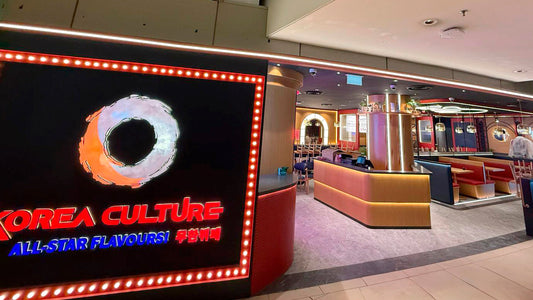Share
It’s not just spice—it’s satisfaction. Here’s what keeps diners coming back.

There’s a Reason You Keep Craving It
Ever notice how Korean food has a way of pulling you back in? One bite of crispy gochujang-glazed chicken, a spoonful of sweet-savory japchae, or a refreshing hit of vinegared cucumber—and suddenly, you’re hooked. At Korea Culture, located in Changi Airport Terminal 3, we see it every day: first-timers turning into regulars, thanks to the deep, dynamic flavours Korean food is famous for.
It’s not just about heat. It’s about layered taste, balance, and the sensation of contrast—the things that light up your palate and make every meal memorable.
The Gochujang Factor
If Korean cuisine has a secret weapon, it’s gochujang. This fermented chilli paste is thick, tangy, slightly sweet, and umami-rich all at once. It adds body to sauces, depth to stews, and heat to grilled meats without overpowering the rest of the dish.
At Korea Culture, gochujang shows up in dishes like our grilled salmon, bulgogi bowls, and spicy tofu cubes. It’s served on the side in bibimbap, added to soups, and even blended into dressings for a balanced kick.
The magic lies in its versatility—it makes things bolder, but never unapproachable.
Harmony, Not Chaos
What makes Korean food addictive isn’t just the individual ingredients—it’s the contrast between them. A rich stew paired with crisp pickled radish. Char-grilled meats balanced by soft tofu. A spicy bite followed by something cool and sweet.
Korean meals are built around this kind of push and pull. That’s why guests at our buffet don’t just find food they like—they find combinations they love, and new favourites with every visit.
Our menu is designed to encourage exploration, with over 50 rotating banchan options and mains that cover every flavour profile.
The Sweet-Savoury Pull
Another reason Korean food feels so addictive is its ability to blur the lines between sweet and savoury. Dishes like japchae, sweet soy tofu, and even Korean potato salad mix sugar, garlic, sesame oil, and soy sauce to create complex profiles that are comforting but never dull.
This isn’t sweetness for sweetness’s sake—it’s deliberate, and it keeps your brain engaged as much as your taste buds.
The Comfort of Warm Rice and Cool Contrast
A big part of Korean food’s craveability also comes from temperature contrast. You might start with a warm bowl of bibimbap or kimchi stew, then chase it with cool, vinegared cucumber, lightly chilled seaweed salad, or even a crisp apple slaw.
At Korea Culture, every table offers these elements side by side—thanks to our free-flow buffet and our careful pairing of mains and banchan.
Experience this flavour flow at Terminal 3, where each meal is crafted to satisfy, surprise, and stay with you long after you’ve finished.
Not Just Craving—Comfort
Ultimately, Korean food is addictive because it’s nourishing without being boring, satisfying without being heavy, and dynamic without being difficult. It’s food that meets you where you are—whether you want something bold, something gentle, or something right in between.
At Korea Culture, we bring that experience to your table, with flavour, care, and variety that keep you coming back.
Discover the addictive side of balance and taste what Korean food is really about.
Frequently Asked Questions
Is gochujang very spicy?
It’s more complex than hot. Gochujang is tangy, savoury, slightly sweet, and just a little spicy. We serve it on the side in dishes like bibimbap so you can adjust to your comfort.
What if I don’t like spicy food?
Many of our most addictive dishes are non-spicy. Soy-marinated tofu, japchae, creamy potato salad, and seasoned sprouts are mild but full of flavour.
Is Korean food unhealthy if it’s so flavourful?
Not at all. Korean cuisine is built around balance—light proteins, fermented vegetables, and minimal frying. Our buffet offers nutritious choices across the board.





